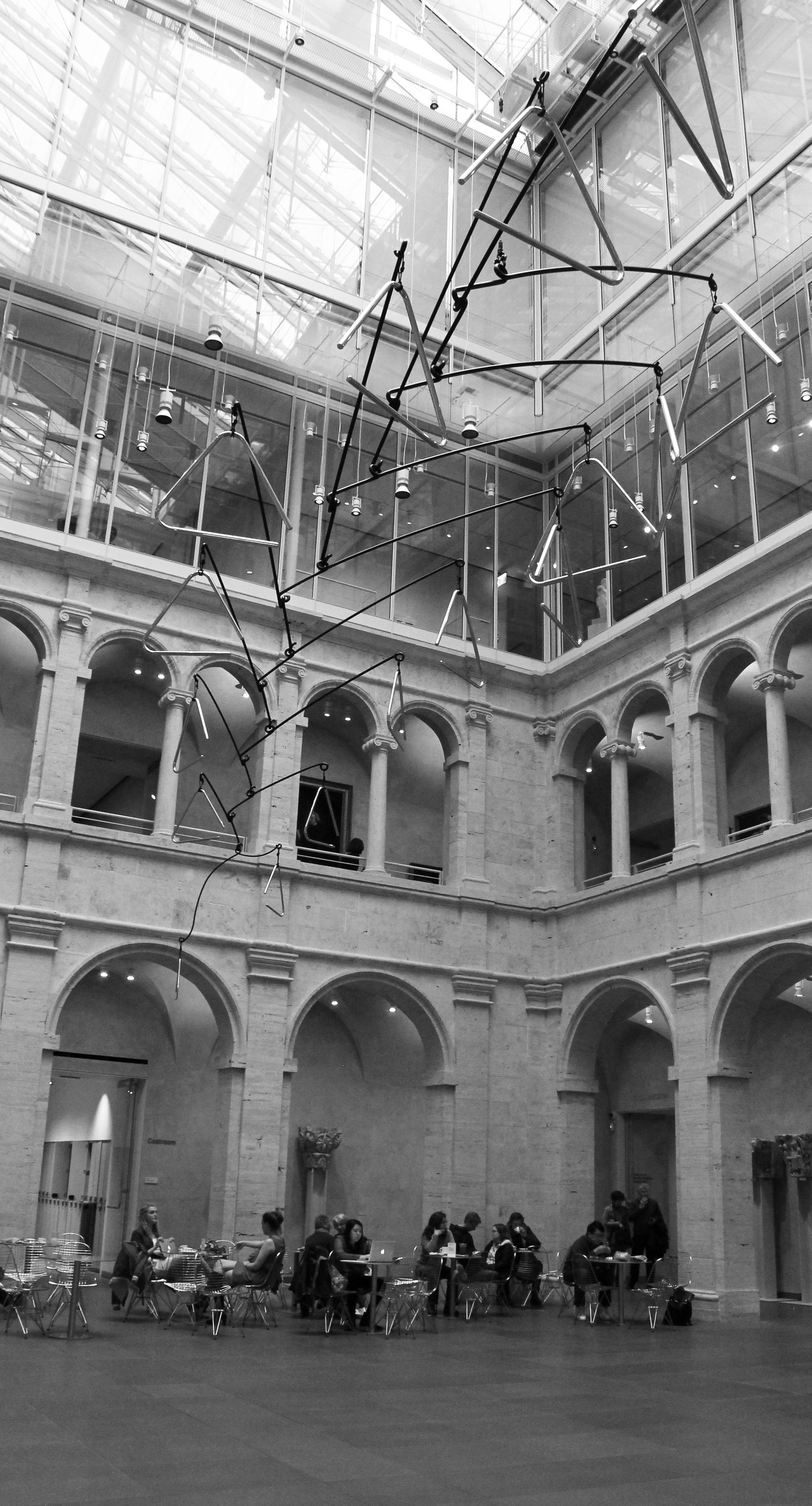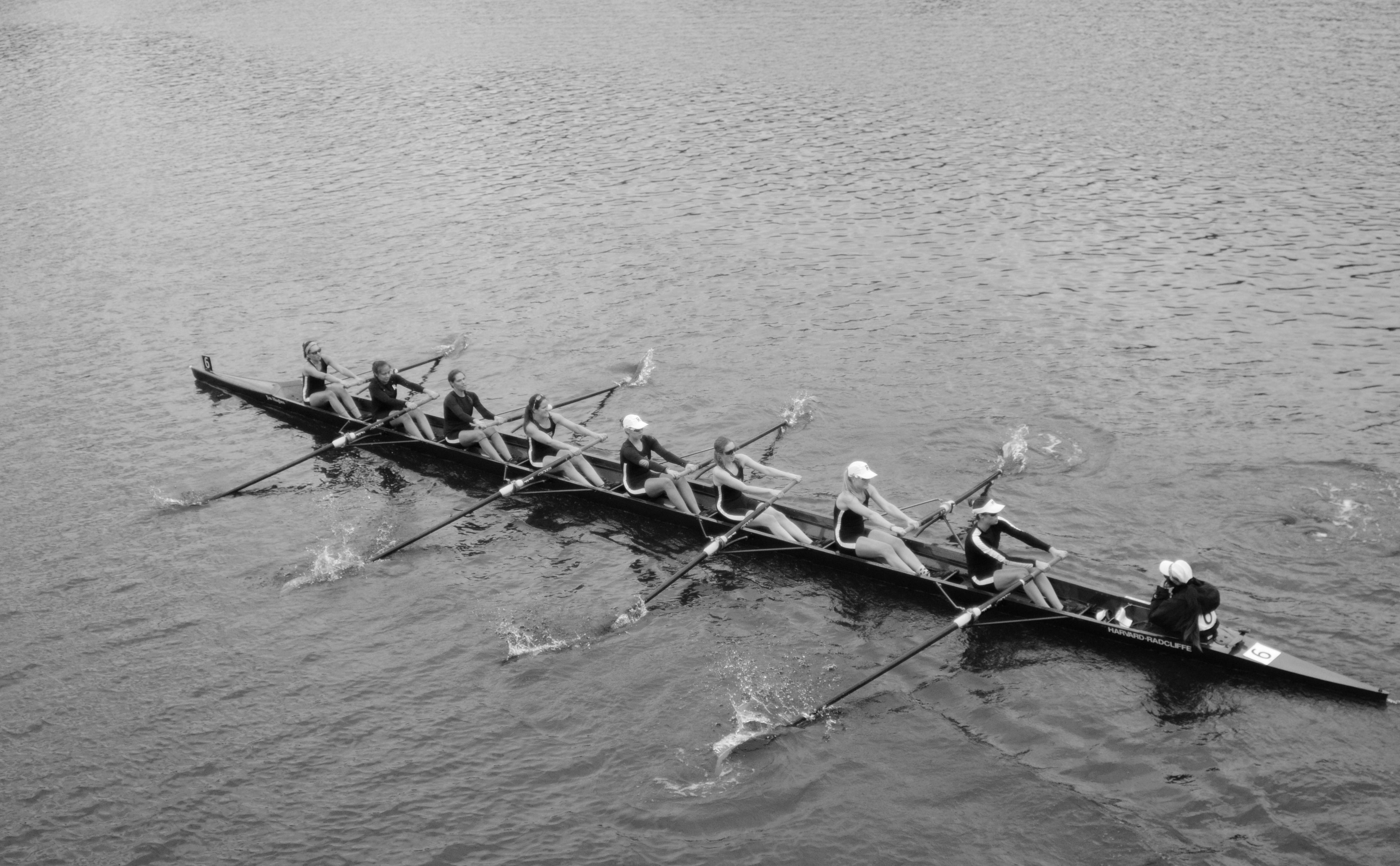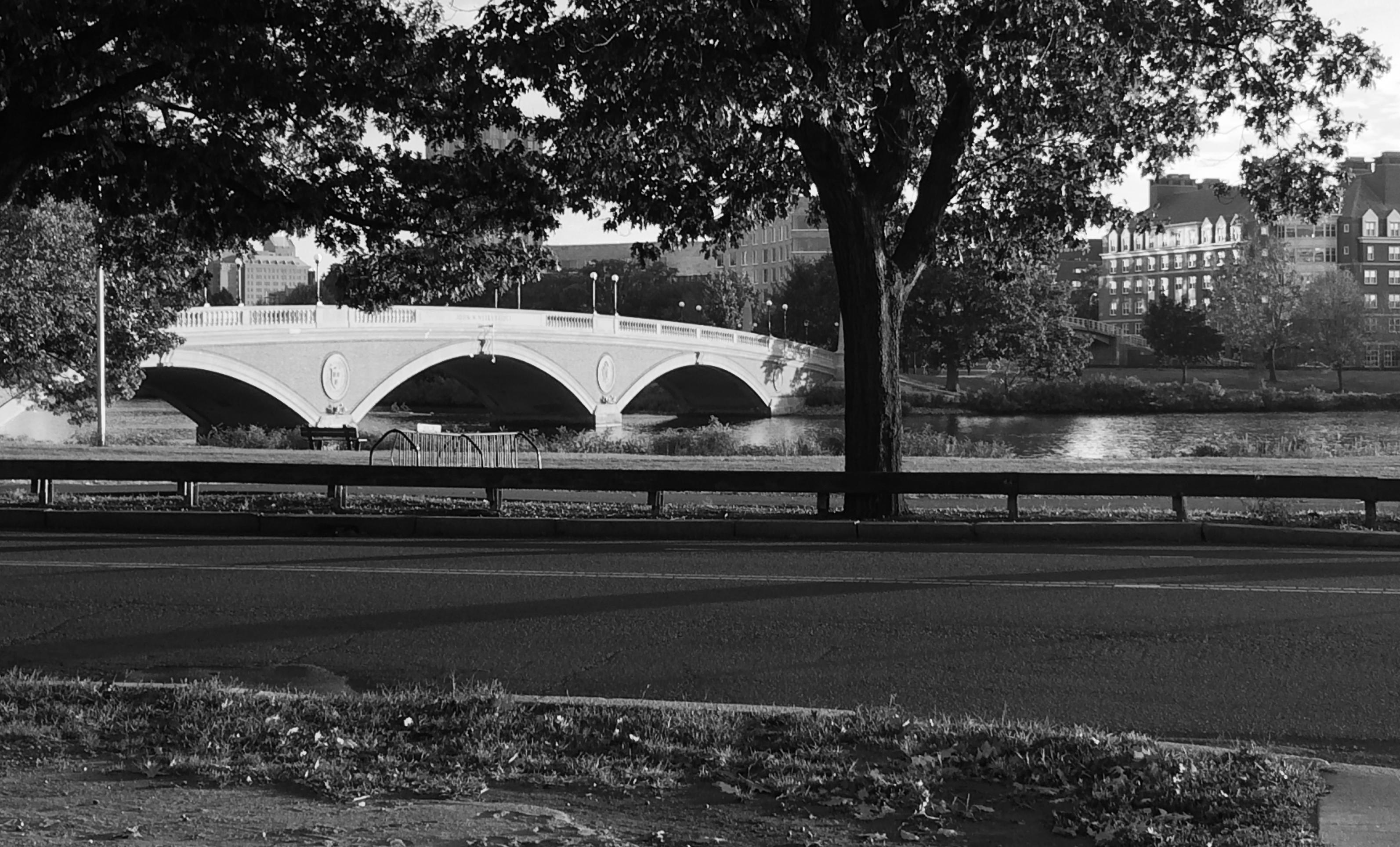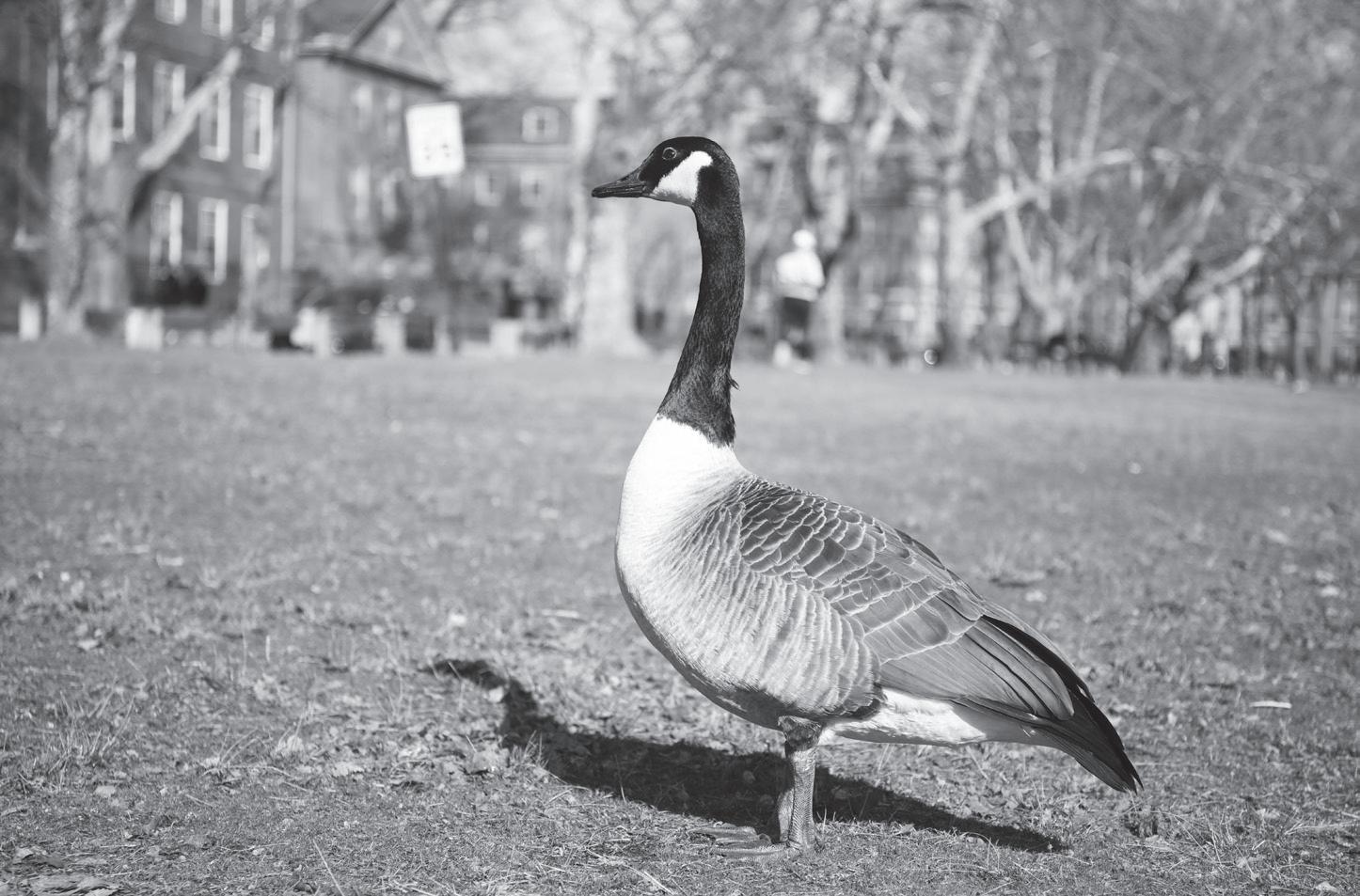
28 minute read
News
Women’s Center Puts On Women’s Week Events
By JESSICA LEE and CHRISTINA T. PHAM CRIMSON STAFF WRITERS
At the Harvard College Women’s Center’s 14th annual Women’s Week, eight student-led events celebrated the turn of the decade with the theme “New Visions,” in honor of International Women’s Day.
The Women’s Center has historically hosted Women’s Week to facilitate conversations surrounding intersectionality and women’s and gender issues. The theme “New Visions” addresses the changing ways in which society discusses gender issues — while also looking forward to how women’s roles will manifest in the future, according to a post on the Women’s Center’s Facebook.
Student organizations spearheaded a variety of events throughout the week, ranging from panels to social dance lessons to self-care. Madison L. Fabber ’22 — who moderated a Women’s Week panel and helped organize the Harvard Ballroom Dance Team’s event — said she think Women’s Week is “really important.”
“It gets us this space and this dialogue for so many people to come together and explore gender and identity through all these interesting facets,” Fabber said.
The Albanian Leadership Initiative Series held a conversation Tuesday titled “From Montenegro to the Red Carpet: A Life of Giving” with model and philanthropist Emina Cunmulaj, who spoke about social activism and women’s empowerment. Later that evening in Emerson Hall, Latinas Unidas assembled a group of panelists
Stephanie Javier Extension School Student
— including Amira Al-Subaey, an organizer for the Massachusetts Immigrant & Refugee Advocacy Coalition — and Harvard students to discuss women of color in politics.
At a panel and social dance lesson Friday called “Samba Rolls and Gender Roles,” officers and coaches from the Ballroom Dance Team discussed how they have been affected by gender norms in the ballroom and how those standards are changing. The Women’s Center wrapped up Women’s Week on Saturday with an event about “How Women Are Changing the Game,” to celebrate the achievements of pioneering women who have been overlooked in history.
Harvard Ballroom Dance Team Captain Olga Kiyan ’22 said she thinks that women are often “made to feel like they’re not enough” and consequently “start to doubt their abilities.” “Starting those conversations and being like, ‘You’re not alone. You are enough, and what you’re doing is amazing,’ and having those types of discussions, I think, is important to help combat that,” Kiyan said. Stephanie Javier, an Extension School student who attended the ballroom event, said Women’s Week helped her reflect on women’s identities.
“I think that it’s really wonderful that we as women are awakening to our natural feminine energy and recognizing and acknowledging how powerful it is: this very nurturing force, you know, this very nurturing energy,” Javier said. “And to be a part of that is quite an honor.”
jessica.lee@thecrimson.com christina.pham@thecrimson.com
Undergraduate Council Holds Meeting Via Video Platform
By SHARON XU CRIMSON STAFF WRITER
Harvard’s Undergraduate Council held its weekly general meeting Sunday over the video conferencing platform Zoom due to coronavirus concerns. Council meetings usually take place Sunday at 4 p.m. in the Isaacson Room in Smith Campus Center. But this Sunday, representatives joined the general meeting virtually from the comfort of their dorms, house dining halls, and, in the case of UC president James A. Mathew ’21, even a Panera Bread.
“On account of recent developments regarding COVID-19 in the Boston area, this week’s UC General Meeting will be conducted via the telecommunications platform Zoom,” UC secretary Nicholas J. Brennan ’23 wrote in an email to Council representatives Saturday night. At Sunday’s online meeting, representatives discussed the week’s Grants Pack, which allocates funding for student organizations.
They also discussed a proposal to integrate College X Change, an online shopping platform for students, with my.harvard, an online portal that houses students’ academic and personal information as well as Harvard’s course registration system.
UC Finance Committee chair Rukmini “Mini” Ganesh ’22 and UC treasurer Noah Harris ’22 sponsored the legislation about the Grants Pack, which the Council unanimously adopted. In the Grants Pack, the Council allocated $16,000.15 to various student organizations. While the Council discussed the Grants Pack legislation, Lowell House representative Rachel L. Reynolds ’22 raised questions about funding in light of student organizations’ event cancellations due to coronavirus. Ganesh said some student organizations have already cancelled their grant requests due to coronavirus.
“If they’re no longer holding the event, I just zero out their application,” Ganesh said.
UC Social and Residential Life Committee Vice Chair David Y. Zhang ’23, UC Parliamentarian and Historian Soyoun “Soy” Choi ’23, and Harris sponsored the legislation on the College X Change program, which the Council also unanimously adopted.
The Council will work with Harvard University Information Technology to integrate College X Change with my.harvard so students can easily access the site. As an online shopping platform, students can use College X Change to find more affordable goods. The site, which is already sponsored by the UC, includes course materials, test preparation books, event tickets, dorm supplies, technology, and clothing among its offerings.
The Council will not have its weekly meeting next Sunday due to spring break.
sharon.xu@thecrimson.com
GAY FROM PAGE 1 Tenure Review Not to Comprise Individual Cases
Gay also said she will not examine individual tenure cases, including the University’s decision to deny tenure to Romance Languages and Literatures associate professor Lorgia García Peña, as a part of the review.
Hundreds of students and ethnic studies scholars within and outside Harvard have condemned the University for its decision to deny García Peña tenure.
Asked if she would examine how candidates’ race and gender impact tenure outcomes, Gay said such factors are not bases for evaluation in the tenure process.
Aside from examining tenure, Gay is currently engaged in a number of other administrative proceedings.
FAS is currently reviewing the culture and structure of Harvard’s Athletics Department. Gay said she hopes FAS will be able to share a report on the athletics study with Harvard affiliates this spring.
The outside consulting firm
Claudine Gay Dean of FAS
conducting the athletics study, Mercer, has finished collecting data regarding student athletes’ experiences and the department’s structure and will continue to collect data regarding the department’s organizational structure, according to Gay.
Gay’s administration is also currently conducting three major searches: a search for faculty specializing in ethnic studies, a search for the next Athletics Director, and a search for the next dean of the Division of Continuing Education.
At least ten ethnic studies faculty candidates will visit Harvard to give talks and meet with faculty and students in the coming weeks, according to Gay.
After all ten scholars visit campus, the search committee will begin to consider which four candidates to hire.
Gay said the Athletics Director search committee is currently assessing the needs of “constituencies and stakeholders.”
She said there is no current timeline for the search.
“I think it’ll take as much time as it takes to get it right,” Gay said.
The DCE dean search committee is nearing the conclusion of its “listening” phase, according to Gay.
kevin.chen@thecrimson.com
By KELSEY J. GRIFFIN CRIMSON STAFF WRITER
The Harvard Animal Law and Policy Clinic filed an amicus brief to the Supreme Court on Thursday supporting a Center for Biological Diversity-led challenge to the Trump administration’s wall along the Mexico-United States border.
The Center for Biological Diversity filed a petition for certiorari on Jan. 31, asking the Supreme Court to review six decisions by the U.S. Department of Homeland Security which allowed the Trump administration to waive over 40 federal laws that would slow down the construction of a border wall. The Law School clinic represents the North American Butterfly Association and the National Butterfly Center — who manage a refuge along the border — as amici curiae in the case. Their brief claims the waivers DHS approved subvert laws that protect endangered species such as butterflies and moths.
“This includes irreparably harming dozens of rare animal and plant species that inhabit the Lower Rio Grande Valley, and forever destroying the already extremely fragile ecosystems on which they depend,” the brief reads. Law Student Ashley Maiolatesi said the proposed border wall will differ from the barriers previously in place and could harm animals living in the area.
Ashley Maiolatesi Harvard Law Student
“It’s going to be made of steel and metal and be completely solid, and it’s going to have stadium lighting around the top and so that affects a lot of animals in their migration patterns and how they breed and travel and all sorts of things like that,” Maiolatesi said in an interview.
“Anything that is like a terrestrial animal — like the endangered ocelot that lives in that area — it can’t obviously get past this 36-foot high wall,” she added. “That is a huge issue because these animals are already so endangered.”
Maiolatesi also said constructing the wall would necessitate clearing land on either side of the border. The amicus brief describes the proposal for this 150-feet-wide clearcut area as an “enforcement 10 zone” and claims it would destroy an estimated 20 miles of habitat for each mile of the wall built.
“That eliminates over 13,000 acres of viable habitat along the Rio Grande Valley right now,” she said.
The brief mentions additional concerns about the proposed wall, including the lack of a sloped escape route for animals in the case of fire or flood and an increase in danger, pollution, and erosion due to highspeed patrol vehicles.
Maiolatesi said the Law School clinic hopes to raise awareness about the alleged lack of research into the potential consequences of the proposed wall.
“None of the environmental assessments or any paperwork was filed on what these ramifications would be if these changes to the law were made,” she said. “We wanted to really bring to light the animal aspects, and how this was going to be affecting animals in the area throughout the United States and Mexico.”
kelsey.griffin@thecrimson.com
Transformative coverage.
The Crimson thecrimson.com
Scientists Pause Tadpole Aging
By ETHAN LEE CRIMSON STAFF WRITER
Scientists at Harvard’s Wyss Institute have identified chemicals that could effectively pause biological aging as part of their “Biostasis” project, now over a year after they signed a fiveyear contract with the Defense Advanced Research Projects Agency in December 2018.
The team’s goal is to achieve a form of biostasis — that is, “pausing” biological aging — within a living organism by reducing its cellular metabolism. Cellular metabolism is the set of chemical processes that occur within organisms to keep them alive.
Reducing it would essentially stop biological time and keep organs in an unchanging state. Richard Novak, a senior engineer at the Wyss Institute and member of the Biostasis group, said pursuing cryptobiosis, a form of biostasis in which cellular metabolism completely stops, would be nearly impossible.
Instead, the team is trying to induce a hibernation-like state, or “torpor,” in which metabolism would be significantly reduced. “A less extreme but still very, very effective [case] is more like the state of torpor, like people studied in Arctic ground squirrels a lot,” Novak said.
Donald E. Ingher Founding Director of the Wyss Institute
“And that’s more like seasonal torpor, where for several months they go into this torpor state. There’s also daily torpor, where a lot of animals — for example in the tropics or the deserts — they go into torpor to conserve energy when there’s no way that they would find food or water,” Novak added.
Novak said the ultimate goal of the project is to achieve a similar state that would reduce metabolism by “tenfold or higher,” while also being “safe and recoverable.”
Donald E. Ingber, the founding director at the Wyss Institute and principal investigator for the project, said the team has discovered chemical compounds that achieve biostasis in tadpoles.
“We have some chemicals already that, at least in some model systems, like where we use swimming frog tadpoles, we can add and their metabolism slows and their breathing slows and they stop moving,” Ingber said. “And when we wash them out they rebound back to normal.”
Ingber said these chemicals could eventually have medical applications as an injection for humans.
“From the military perspective it’s probably going to be somebody who’s injured badly, so it’s probably not going to be oral,” Ingber said. “So, it’s probably going to be injectable. And it could be inhaled, but if someone’s really badly injured, it’s probably going to be injectable.” Novak said the team is now focusing on achieving biostasis in specific parts of the human body, which he said could allow doctors to delay surgical procedures for certain patients.
He pointed to cases in which transplant patients might have to recover from other injuries before undergoing surgery.
“Let’s say the patient also has burns, they won’t actually be able to have the surgery to reattach the limb, and they lose the limb,” Novak said. “And so if you can just put the limb on hold for, let’s say, several weeks while the patient heals, then you can reattach it.”
Ingber said the team has made much greater progress than he initially expected and praised the Defense Advanced Research Projects Agency’s funding of projects like Biostasis.
“We’ve already made major headway in the first nine months to a year,” Ingber said. “I don’t think we’re going to get it to human-level or whole animal-level in the near term, but I think we’re going to come up with compounds that could have commercial value for particular applications and will make major headway along the path to the bigger goal.”
ethan.lee@thecrimson.com
SEAS Dean Talks Allston Buildings DOYLE FROM PAGE 1
in their complex or their performances we might collaborate on that either have a scientific theme or a societal theme that we want to be involved with.”
Doyle said that the new complex gave faculty the opportunity to redesign classrooms that allow them to innovate new styles of teaching, comparing the developments to Harvard Physics professor Eric Mazur’s invention of the flipped classroom in the 1990s. He said the complex will include unique features not found at other universities, citing the “plaza clubhouse” — a classroom with a large central room attached to several smaller “breakout” rooms — as an example.
“The teams can split out, go into these side rooms, and then rejoin and come back into the main room and be part of like a full lecture kind of experience,” Doyle said. “I’m not aware of facilities like that anywhere. A bunch of our faculty brainstormed, and they came up with this idea to do something pedagogically different since we had a real clean slate and we were designing the teaching space from scratch.” Stefan Behnisch, the German architect at the helm of the project, has been collaborating with SEAS to prioritize innovative and sustainable design, according to Doyle.
Some design features include a groundwater-catching cistern in the basement, green space behind the building, and angled window shades that adjust seasonally while letting in sunlight.
“The campus pressure has been that we want a sustainable building,” Doyle said. “In many cases, you might get a tug of war there. In this case, it hasn’t been, because what the campus wants is what the architect has a vision for and excels in themselves.”
brie.huchanan@thecrimson.com elizabeth,guo@thecrimson.com
ALUMS FROM PAGE 1
Older Alums Aid Harvard Forward
also submitted directly to the University online through Harvard’s election website.
After seeing a tweet about the campaign in November, Robert “Bob” Trietman, who is in his 60s, said he attended a meeting with some of the campaign’s leaders and began his own organizing.
“It was quite energizing to me to see the next generation stepping up and taking care of some things, some issues that need to be taken care of and addressed,” Trietman said.
After a conversation with his father about reaching alumni in continuing care facilities, Trietman said he realized he could connect with Harvard alumni in these facilities and ask for their help collecting signatures. Trietman eventually collected signatures from 75 class years from the year 1944 to 2019. He called the issue of climate change “absolutely” multigenerational.
“I think this issue of climate change resonates with those my generation and older,” he said.
Jane Martin ’51 — a resident in a continuing care facility in Lexington, Mass. — said she received an email from Treitman about getting involved in the Harvard Forward campaign while she was working on a book about environmental harm.
“I felt that I was going to be hypocritical if I didn’t say ‘I believe 1000 percent and of course I was going to collect signatures,” she said. “Next thing I knew, I was in charge of doing that for Brookhaven.”
Martin said she collected 62 signatures over a period of three days. Over her facility’s email list, dubbed the “Rebb,” Martin asked residents to sign the petition forms. As the number of signatures grew, she sent out notices.
“I started calling it ‘The Signing,’” she said. “Any time people signed I would put another notice on the Rebb.”
She also used the Rebb to announce that she and a friend would be sitting in a common space from 10:00 a.m. to 11:30 a.m. on a Monday and Tuesday morning to talk with residents as they went to grab a coffee.
“We just sort of grabbed the people and had them sit down and fill out these forms,” she said. “Practically, everyone wanted to do it.”
She said it was “outrageous” to think that older generations don’t care about climate change. “Of course us old folks believe that this has to be done,” she said. “I mean that’s just outrageous to think that we don’t care.”
Across the country, Anne B. Sobol ’66 collected signatures over coffee and dinner in Sonoma County, Calif. After being contacted by one of her former roommates at Radcliffe who wanted her to sign the petition, Sobol — a former Crimson editor — said she reached out to Harvard Forward and started contacting nearby alumni.
She said she attained 35 signatures by the end of the campaign. “I set up two times when I would be in coffee shops locally,” Sobol said. “I also offered people the alternative of coming to my house.”
Sobol noted that she thought the online process was “cumbersome,” which she said required a Harvard key login, printing documents, and then rescanning them.
University spokesperson Hennessey wrote that online voting was created in 2016 to increase voter participation.
“Online voting was introduced to provide greater and easier access for more alumni around the world to participate in the process,” Hennessey said. Sobol said she became involved with the campaign after living for years in Louisiana and in California, where she witnessed numerous hurricanes, floods, and wildfires.
“Climate change is very real to me, and I feel like people need to take it more seriously,” she said.
michelle.kurilla@thecrimson.com
LAWSUIT FROM PAGE 1
Professor Sues Over Tenure Denial
lasting contributions to their academic disciplines.”
“The process is clear, well defined, and available in writing to every faculty member,” Karoff added.
Rubinstein is represented by Boston-based attorney Monica R. Shah. Shah could not immediately be reached for comment.
Like The Crimson on Facebook.

The latest on music, film, theatre and culture. That’s artsy.

The Crimson thecrimson.com/arts
HUPD Officer Criticized for Use of Force Three Times HUPD FROM PAGE 1
supervisory reviews of the use of force.
In all three incidents the supervisor found that the force was reasonable and within HUPD’s Policies and Guidelines,” Catalano wrote.
Prior to these incidents, Carvello had issued all three men trespass warnings for the Smith Center.
In all three cases, HUPD charged the arrestees with violating their trespass warnings and resisting arrest.
“The Department does not comment on details about individual circumstances,” Catalano wrote. “The most common categories of conduct which lead to issuance of a trespass warning are: violation of building use rules (e.g. sleeping, noise), theft, vandalism, intoxication, disruption, and violent or threatening behavior.”
All three men — who are 20, 21, and 22 years old — are defendants in ongoing criminal cases at Cambridge District Court or Cambridge District Homeless Court that resulted from the charges.
When he began working at the Smith Center, Carvello was assigned to patrol one of Harvard’s most public spaces.
According to its website, the Smith Center “fosters a welcoming and vibrant entrance to Harvard University” for University affiliates, visitors, and Cambridge residents alike. The building sits in the center of Harvard Square.
In addition to his patrol position, Carvello is also one of the department’s defensive tactics instructors, a position in which he teaches HUPD officers best practices for de-escalating situations.
SEPT. 29, 2019 On Sept. 29, 2019 at around 9:30 a.m., Carvello approached Terry T. Jackson, 20, to whom he had previously issued a trespass warning, on the second level of the Smith Center, according to a publicly available incident report.
Carvello wrote in the report that he informed Jackson that he was violating his trespass warning and that Jackson used expletives to describe him while Carvello waited for backup.
Carvello wrote that he pushed Jackson’s head down after he allegedly refused Carvello’s order to place his hands behind his back for an arrest, according to the incident report.
“He refused and grabbed onto one of the several beams lined up inside of the windows,” Carvello wrote. “In an attempt to disengage Mr. Jackson from the beam, I attempted to place him off balance by pushing his head down to the left with my right hand; results were negative.”
According to video footage capturing part of the incident, Carvello put his hand on Jackson’s neck before putting him in handcuffs. Three other officers also arrived on scene to help assist Carvello.
Jackson said in an interview with The Crimson that he could not breathe when Carvello grabbed his neck and said he had an anxiety attack during the arrest.
“It’s just that the officer was pressing his arm against my neck. My neck was hurting. It was through the back of my throat all the way down my spine where my tailbone is. And he literally pushed me against the window, took my arm, he put it all the way up behind my back,” he said.
Aryana S. Watkins, 22, Jackson’s girlfriend, said in an interview with The Crimson that she saw Jackson crying as he was placed in the back of an HUPD car.
Isabel M. Levin ’22 and Quinn T. Lewis ’22, who witnessed the arrest, said in interviews they believe Carvello used excessive force while arresting Jackson.
Levin said she called the department’s station later that day and expressed concerns regarding Carvello’s use of force. Three HUPD officers familiar with the arrest said it was inappropriate that Carvello put his hands on Jackson’s neck and that the department should have removed him from the Smith Center pending investigation.
“The officer arresting Jackson did place his hands on Jackson’s head in an effort to get him to disengage from the column he grabbed onto while resisting arrest,” Catalano wrote. Four months after the arrest, the department selected Carvello to be one of the department’s two patrol officers of the Smith Center. Officers in this post have flexible weekday schedules.
“The central and open nature of the SCC’s public spaces lends itself to increased activity, including behaviors that do not abide by the rules of the space,” Catalano wrote. “Our officers assigned to the SCC are required to respond to more issues than they might otherwise in another part of campus.”
JAN. 28, 2020 On Jan. 28 at approximately 11:22 a.m., Carvello was dispatched to the Smith Center to respond to a report of an “unwanted guest” on the second floor, according to a publicly available incident report Carvello wrote.
As Carvello climbed the steps to the second level, he saw Isaiah L. Scott, 22, to whom he had given a trespass warning the previous day.
Carvello wrote in his report that as he approached Scott, Scott walked away from him toward the Wellness Center on the second floor of the Smith Center. Carvello wrote that, because Scott had allegedly been “non-compliant” in their interaction the day before, Carvello drew his pepper spray as he pursued Scott “in the event Mr. Scott became non-compliant.” Carvello approached Scott near the elevators and told him he was under arrest for trespassing, according to the report. He then ordered Scott to put his hands behind his back. Carvello wrote that Scott refused his orders and repeatedly asked to speak to Carvello’s supervisor. Carvello added that he threatened to pepper-spray Scott.
“He stated; ‘No!! get me
You’ve got three instances of excessive force allegations in six months. That’s a lot. That’s more than most officers will accrue over the course of a 25- or 30- year career.
Thomas Nolan Former Boston Police Department Lieutenant
your Supervisor!’ I stated; ‘Don’t make me spray you!’. I told him again to turn around and put his hands behind his back; to which he replied again; ‘No!! get me your Supervisor!” Carvello wrote.
Carvello wrote that he pepper-sprayed in Scott’s direction. Scott dodged the spray and attempted to run away from Carvello. Carvello then followed Scott, repeatedly demanded that he put his hands behind his back, and sprayed him two more times, making contact with Scott’s face.
“I followed him and repeated commands to stop and put his hands behind his back,” Carvello wrote. “I sprayed two more times hitting him once on the side of his face and once directly in his eyes. I secure[d] him against the wall and waited for backup to arrive.”
Six HUPD officers arrived at the scene to assist Carvello with handcuffing Scott, according to Carvello’s report. As the group of officers attempted to pin Scott to the wall, Carvello wrote, Scott’s resistance allegedly intensified, prompting Carvello to tell the officers to move Scott to the ground.
“It was at that time that I yelled to the group to put him on the floor. Mr. Scott was forced to the floor where handcuffing was completed,” Carvello wrote.
HUPD Sergeant James P. Pignone, 53, arrived at the scene of Scott’s arrest at approximately 11:30 a.m.
He wrote in a report that Scott was “very agitated” while they waited for an ambulance and that Scott told him he wanted to file a complaint against Carvello.
“Scott said that he was being harassed by Officer Carvello,” Pignone wrote. “That he (Scott) had done nothing wrong, that he wasn’t trespassing and that Officer Carvello had just walked up to him, called him a n----r and sprayed him with pepper spray.”
Scott did not respond to multiple requests for comment. Catalano wrote in his statement that the department allows officers to use pepper spray and force in certain situations.
“By Department policy officers are allowed to use Oleoresin Capsicum (OC) spray,” Catalano wrote. “HUPD officers are instructed to use only the amount of force that is reasonably necessary to deescalate the incident and bring it under control.
If de-escalation does not work, officers may apply an escalating level of force to meet the level of resistance.”
Pignone wrote in another report that he assessed the arrest, finding that Carvello’s use of force was appropriate.
“I conclude that Off. Carvello’s use of force, in attempt to gain control of Scott and stop him from his aggressive and non compliant behavior, was within HUPD’s policies and guidelines,” he wrote.
Three officers in the department familiar with the situation disagree with Pignone’s assessment.
They told The Crimson they believe Carvello used excessive force while arresting Scott.
The department is conducting an ongoing investigation into the arrest, according to Catalano.
FEB. 20, 2020 On Feb. 20 at approximately 11 a.m., Carvello approached Tyrique D. Simmons, 21, who had an active trespass warning for all Harvard University property, on the first floor of the Smith Center, according to two internal HUPD incident reports written by Carvello.
Carvello wrote that he approached Simmons, who was walking from the Smith Center’s common area toward its main hallway.
As Simmons attempted to leave, Carvello “put [his] hands on [Simmons’s] chest and shoulder area and guided him toward the wall,” according to the first report.
The two men grappled near a column across from the elevators, according to the police reports. Simmons then made an attempt to run away and Carvello grabbed Simmons and backed him into the column, where Carvello told him he was under arrest.
Carvello wrote in the first internal report that Simmons’s resistance intensified after Carvello told Simmons he was under arrest. Specifically, he wrote that he “could feel his body tighten and lean forcefully toward mine.”
Carvello wrote in both reports that he punched Simmons to preempt an assault.
“I struck Mr. Simmons with a short strike to the left side of his face with my right fist,” he wrote in the second report.
Simmons said in an interview with The Crimson that he was attempting to leave the Smith Center when Carvello stopped him.
He added that Carvello grabbed him and punched him in the face.
During the incident, Simmons told Carvello, “I didn’t do anything,” according to Carvello’s reports and video footage.
On the day of the arrest, three witnesses said they believed Carvello used excessive force when arresting Simmons. One witness said she filed a complaint with HUPD the same day.
Simmons told The Crimson he feared for his life during the arrest and that he has since experienced heightened stress. His mother, Tanya L. Simmons, 42, said her son has avoided physical contact in the weeks since the arrest.
Several hours after the arrest, Carvello submitted a report detailing the incident to an internal HUPD database.
According to an officer in the department, the report was updated the following day with new details that were not included in the previous report. “Every incident report written is reviewed by a supervisor as well [as] other department personnel as part of a quality control process,” Catalano wrote. “When an error or additional information that should have been added is identified, officers will update either their initial report or add a supplemental narrative to [the] initial report.”
Carvello wrote in the first report that he struck Simmons on the left side of his face.
“Mr. Simmons[’s] resistance appeared to increase after I told him that he was under arrest,” the section of the first report describing Carvello’s use of force reads. “I held him against the column by placing both of my hands on his chest and shoulder area. While holding him, I could feel his body tighten and lean forcefully toward mine. Feeling that an assault was imminent, I struck Mr. Simmons [on] the left side of his face with my right fist.” Carvello’s second report includes a more detailed account of both Simmons’s behavior and the incident more broadly. “Mr. Simmons resisted my attempts to get control of him by repositioning his feet, striking my hands away in an aggressive manner, swing[ing] his hips from side to side and mov[ing his] hands up and down, as I attempted to take hold of at least one of them,” Carvello wrote. “Finally, I was able to get hold of Mr. Simmons’ body. It was at this moment that I felt his body get tight and begin to push toward me. These pre-assault cues [led] me to think that I was about to be tackled or pushed to the ground. Sensing that an assault was imminent, I struck Mr. Simmons with a short strike to the left side of his face with my right fist.”
In the first report, Carvello wrote that he forced Simmons to the floor before other officers arrived at the scene.
“The strike both distracted and stopped Mr. Simmons’ advance. It also provided me with the opportunity to force him to the floor. Mr. Simmons tucked his hands under his body” as two other officers arrived, according to Carvello’s first report.
In the second report, Carvello added that he drew his pepper spray while Simmons was on the floor.
“At this point I ordered Mr. Simmons to put his hand behind his back, he refused,” Carvello wrote in the second report. “I drew my department issued OC spray and once again ordered Mr. Simmons to place his hands behind his back to which he refused. I yelled in a loud voice, ‘Don’t make me spray you’. I thought about the cross contamination to the many visitors to the SCC if I were to spray Mr. Simmons. I secured my OC and continued to control him on the floor.”
While Carvello stood over Simmons, he repeatedly threatened to use his pepper spray, according to a partial video of the arrest.
Two HUPD officers arrived on scene and helped handcuff Simmons, according to both versions of the report.
Three HUPD officers familiar with the situation said they believe Carvello used excessive force with Simmons.
Former Boston Police Department lieutenant and current Emmanuel College sociology professor Thomas Nolan called the number of allegations raised against Carvello over the past several months unusual.
“You’ve got three instances of excessive force allegations in six months,” he said. “That’s a lot. That’s more than most police officers will accrue over the course of a 25- or 30-year career.”
ema.schumer@thecrimson.com charles.xu@thecrimson.com





